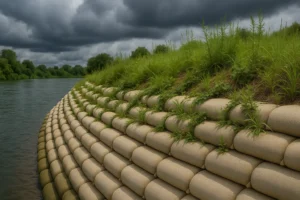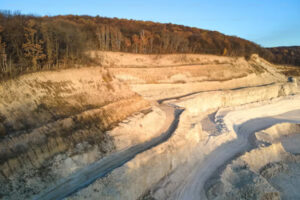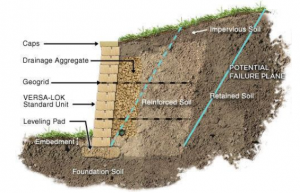Beach Protection Project in Maldives: A Case Study by Ocean Non Wovens
The Maldives, known for its pristine white-sand beaches and turquoise waters, is a beacon for tourism and natural beauty. However, the islands face constant threats from coastal erosion, exacerbated by climate change and rising sea levels. Addressing these challenges requires innovative and sustainable solutions to protect the fragile ecosystem while preserving the natural allure of the beaches. This case study highlights the contribution of Ocean Non Wovens to a critical Beach Protection Project in the Maldives, utilizing 2,500 Ocean Non Woven Geobags-450 GSM.
Understanding the Challenges of Coastal Erosion
Coastal erosion is a significant concern for island nations like the Maldives, where beaches act as natural barriers against the sea. According to a study by the National Institute of Oceanography, global sea levels have risen by approximately 3.3 mm per year in the last two decades, leading to increased wave activity and sediment displacement. (Source: NOAA)
The Maldives’ vulnerability to erosion stems from its unique geomorphology. Most islands are low-lying and comprised of coral reefs, making them susceptible to wave action, storm surges, and human activities like sand mining. If left unaddressed, erosion could result in loss of land, destruction of habitats, and severe economic impacts on tourism and fisheries.
The Role of Geobags in Beach Protection
Geosynthetic materials have revolutionized coastal protection projects worldwide. Among these, geobags—made from durable, permeable fabrics—have emerged as an effective, environmentally friendly solution. Ocean Non Wovens’ Geobags-450 GSM, specifically designed for such applications, offer the following advantages:
- High Durability: Made from high-strength polypropylene fibers, the Ocean Non Woven Geobags can withstand prolonged exposure to harsh marine conditions.
- Environmentally Friendly: Unlike traditional solutions such as concrete or rock revetments, geobags integrate seamlessly into the natural environment, promoting sediment accretion and marine habitat restoration.
- Easy Installation: Lightweight and flexible, these geobags are easy to handle, reducing labor costs and project timelines.
- Customizable: The 450 GSM geobags supplied for this project were tailored to ensure compatibility with site-specific conditions in the Maldives.
Implementation: Ocean Non Wovens in Action
For this Beach Protection Project, Ocean Non Wovens supplied and deployed 2,500 Ocean Non Woven Geobags-450 GSM. The project was executed over three months, involving meticulous planning and collaboration with local environmental agencies.
Installation Process:
- Site Preparation: The first step involved assessing the erosion-prone areas and preparing the site by removing debris and leveling the ground.
- Filling and Placement: The geobags were filled with locally sourced sand to minimize environmental disruption. Each bag was placed strategically along the shoreline to act as a barrier against wave action.
- Monitoring and Maintenance: After installation, the site was monitored for changes in sediment patterns, and periodic adjustments were made to optimize performance.
Results:
- Erosion Control: The geobags significantly reduced wave energy, preventing further erosion.
- Sediment Accumulation: Within weeks, natural sediment began to accumulate around the geobags, rebuilding the beach.
- Eco-Compatibility: Marine life adapted to the geobags, transforming them into artificial habitats for small fish and corals.
What Most Companies Don’t Discuss
While many companies highlight the immediate benefits of geosynthetic products, few discuss the long-term considerations and challenges:
- Sustainability: Ensuring that the materials used align with the environmental and cultural context is crucial. For this project, Ocean Non Wovens prioritized the use of UV-resistant materials to extend the lifespan of the geobags in the tropical climate.
- Community Involvement: Engaging local communities in the implementation process not only builds trust but also ensures the solution is maintained post-installation.
- Economic Viability: Although geosynthetics can seem costly upfront, their longevity and minimal maintenance requirements make them more cost-effective than traditional methods in the long run.
Conclusion: A Sustainable Future with Ocean Non Wovens
The Beach Protection Project in the Maldives exemplifies Ocean Non Wovens’ commitment to providing innovative, sustainable, and high-quality geosynthetic solutions. By leveraging our Ocean Non Woven Geobags-450 GSM, we successfully mitigated coastal erosion while preserving the natural beauty of the islands.
At Ocean Non Wovens, we believe in creating a harmonious balance between development and environmental stewardship. Whether it’s beach protection, landfill containment, or erosion control, our products are designed to meet the highest industry standards. If you’re looking for reliable geosynthetic solutions tailored to your project needs, contact us today and let us help you build a sustainable future.



